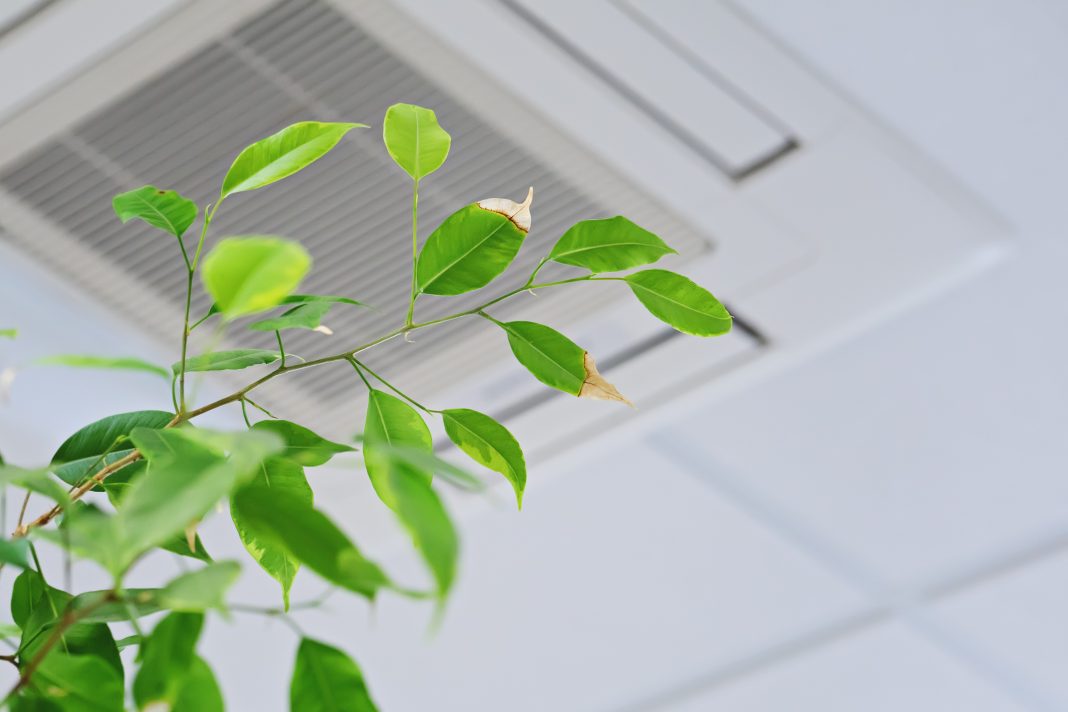Despite the extra focus on indoor air quality (IAQ) prompted by the pandemic, lots of people are still talking about making buildings healthier, safer and more efficient but only a few are doing anything about it, says Nathan Wood from the Building Engineering Services Association
This year’s National Clean Air Day was a high-profile event that showcased dozens of air quality events around the country. It provided compelling evidence of the indoor air quality (IAQ) crisis gripping the country (if more was needed) and the important role played by mechanical ventilation systems in protecting the health and wellbeing of building occupants.
It was also an extremely frustrating day because, despite the increased profile of this issue, there are still thousands of buildings that put people in harm’s way. We have regulations, but people do not check that their installations comply – and there is too much wriggle room in the wording of the regulations, which means people are still specifying the cheapest option rather than the right one.
Research released by Clean Air Day organiser Global Action Plan established for the first time that air pollution affects every major organ in the human body, but that most people think it is only harmful to their lungs.
“49% of people think air pollution is connected to worsening asthma symptoms…and 44% also rightly connect it to poor lung function development, 42% to bronchitis and 35% to lung cancer,” a Clean Air Day statement said.
“However, only 12% of the population associate it with strokes, 10% with dementia, and 18% poor brain development.”
Air quality is the biggest environmental threat to our health
Yet it is “the biggest environmental threat to our health”, according to leading air quality and health expert Professor Stephen Holgate of Southampton University.
“Even though we can’t see it, air pollution impacts our health from our first breath to our last,” he said.
“When we breathe polluted air, it can inflame the lining of our lungs and get into our bloodstream ending up in the heart and brain.
“Air pollution is a public health crisis.”
Health experts have also identified the crucial role played by building ventilation in maintaining health and comfort through temperature and humidity control and have recognised the importance of reducing moisture, odours, and gases.
Poor air quality causes a decrease in productivity
A NASA study showed that human productivity fell by 3.6% for every 1C the indoor temperature rose above 22C and the British Council for Offices (BCO) recommends temperature in commercial buildings should be maintained at between 20C and 24C. It also recommends 12 litres per second, per person (l/s pp) of clean air with an additional 10% in high density occupied spaces. It also says that controlling humidity is crucial.
However, the BCO’s most recent studies showed the average relative humidity (RH) in offices was 38%, whereas for good health it should be between 40% and 60%. At 35% people will experience eye irritation, nasal dryness and sore throats. This also has important implications for making our buildings more infection resilient in preparation for the next pandemic or just to deal with our annual flu and cold outbreaks.
Market research does suggest that global demand for commercial building ventilation and IAQ is picking up. A new report by marketing intelligence consultancy Guidehouse Insights predicts that the commercial energy efficient ventilation and IAQ market will grow from $6.5bn in 2022 to $13.6bn in 2031 – just under 9% a year.
However, the report also says there are potential barriers to that growth including rising costs, a shortage of technical expertise in the market and a failure to adopt a holistic system design approach, which undermines performance. This clearly needs to be factored in at the planning and early design stages of both refurbishment and new build projects – and people should be warned to steer clear of so-called “silver bullet” technologies.
For example, the pandemic has created unprecedented demand for disinfection techniques like ultraviolet germicidal irradiation (UVGI) and ionisation. These have their place but are not solutions in themselves. All such techniques must be part of a total system design that includes all aspects of IAQ control, including improved and targeted flow rates produced by well-designed mechanical ventilation to reduce viral loads and control temperature and humidity.
Holistic approaches to addressing the crisis
“Even though air pollution reduction is still at the core of IAQ management in certain regions or during specific periods, IAQ solutions need to be considered as part of a holistic approach to addressing these issues, rather than focusing on standalone disinfection,” said Guidehouse Insights’ senior research analyst Young Hoon Kim.
BESA has produced three free guides to help building owners, managers and maintainers address this urgent issue: The Beginner’s Guide to IAQ provides an overview of the problem and its Guide to Good Practice for IAQ focused on the importance of measuring and monitoring to deliver better health and wellbeing outcomes. The first was developed in partnership with Mitsubishi Electric and has been downloaded for free more than 2,000 times.
Earlier this year, it launched Buildings as Safe Havens – a practical guide, also in partnership with Mitsubishi Electric. This provides a step-by-step approach to getting the most from working with IAQ specialists, so facilities managers and end users can select the right options for their buildings.

All three guides can be downloaded for free from: www.theBESA.com/iaq
Nathan Wood
Chair, Health & Wellbeing in Buildings Group
Building Engineering Services Association
Tel: +44 (0)20 7313 4900

















